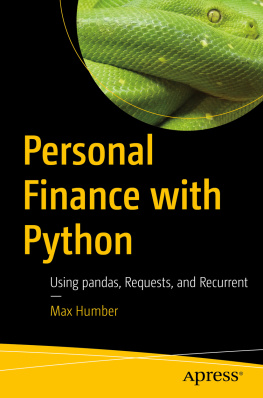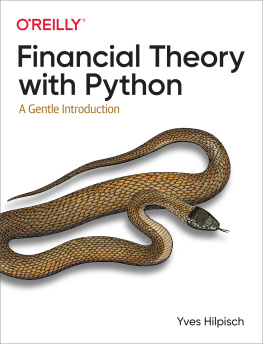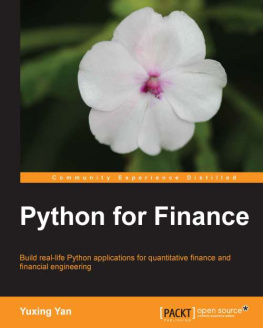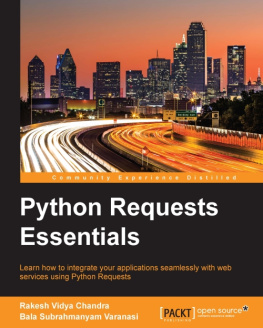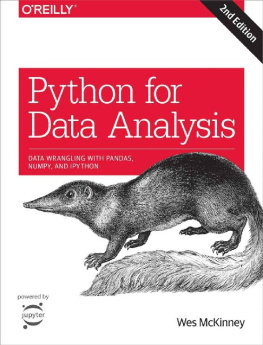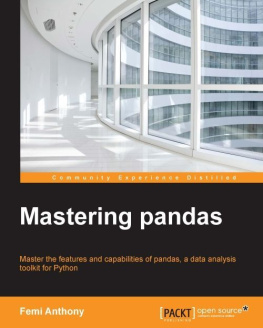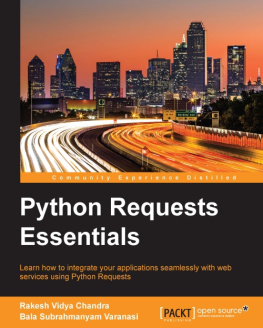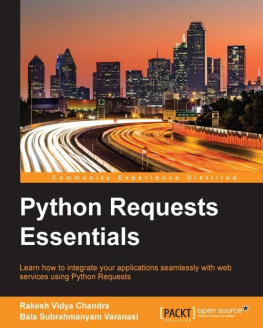Humber - Personal Finance With Python: using pandas, requests, and recurrent.
Here you can read online Humber - Personal Finance With Python: using pandas, requests, and recurrent. full text of the book (entire story) in english for free. Download pdf and epub, get meaning, cover and reviews about this ebook. City: S.l., year: 2018, publisher: APRESS, genre: Home and family. Description of the work, (preface) as well as reviews are available. Best literature library LitArk.com created for fans of good reading and offers a wide selection of genres:
Romance novel
Science fiction
Adventure
Detective
Science
History
Home and family
Prose
Art
Politics
Computer
Non-fiction
Religion
Business
Children
Humor
Choose a favorite category and find really read worthwhile books. Enjoy immersion in the world of imagination, feel the emotions of the characters or learn something new for yourself, make an fascinating discovery.
- Book:Personal Finance With Python: using pandas, requests, and recurrent.
- Author:
- Publisher:APRESS
- Genre:
- Year:2018
- City:S.l.
- Rating:5 / 5
- Favourites:Add to favourites
- Your mark:
- 100
- 1
- 2
- 3
- 4
- 5
Personal Finance With Python: using pandas, requests, and recurrent.: summary, description and annotation
We offer to read an annotation, description, summary or preface (depends on what the author of the book "Personal Finance With Python: using pandas, requests, and recurrent." wrote himself). If you haven't found the necessary information about the book — write in the comments, we will try to find it.
Humber: author's other books
Who wrote Personal Finance With Python: using pandas, requests, and recurrent.? Find out the surname, the name of the author of the book and a list of all author's works by series.
Personal Finance With Python: using pandas, requests, and recurrent. — read online for free the complete book (whole text) full work
Below is the text of the book, divided by pages. System saving the place of the last page read, allows you to conveniently read the book "Personal Finance With Python: using pandas, requests, and recurrent." online for free, without having to search again every time where you left off. Put a bookmark, and you can go to the page where you finished reading at any time.
Font size:
Interval:
Bookmark:
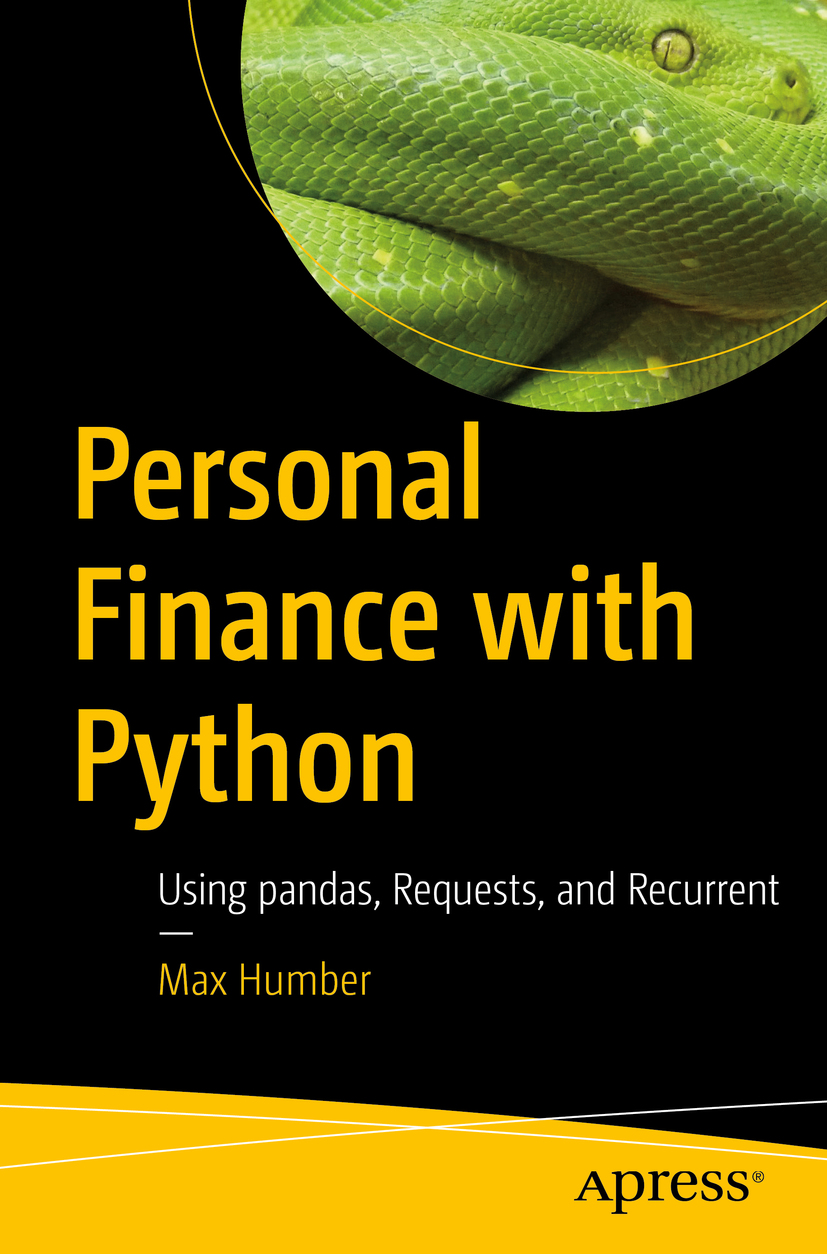

Any source code or other supplementary material referenced by the author in this book is available to readers on GitHub via the books product page, located at www.apress.com/9781484238011 . For more detailed information, please visit www.apress.com/source-code .
This book is about Python and personal finance and how you can effectively mix the two together. It is a crash course on how deal with data, how to build up financial formulas in code from scratch, and how to evaluate and think about money in your day-to-day life.
Although each chapter is driven by an idea in personal finance, this book is not an exhaustive compendium on the topic. I try to provide just enough theory in each chapter to get you going, but I made a conscious effort to abstract away and hide a lot of the math so that we dont get stuck in the weeds.
If Im being completely honest with you (and myself), this book is my love letter to pandas, the main data manipulation library in Python. pandas is a wonderful tool and has become the bedrock on top of which a lot (if not most) machine learning is built. If you get good at pandas (and this book should help!), you will be well positioned to dive into the world of machine learning. But if machine learning isnt your thing, dont worry, I promise that you can still get a lot of value out of this book.
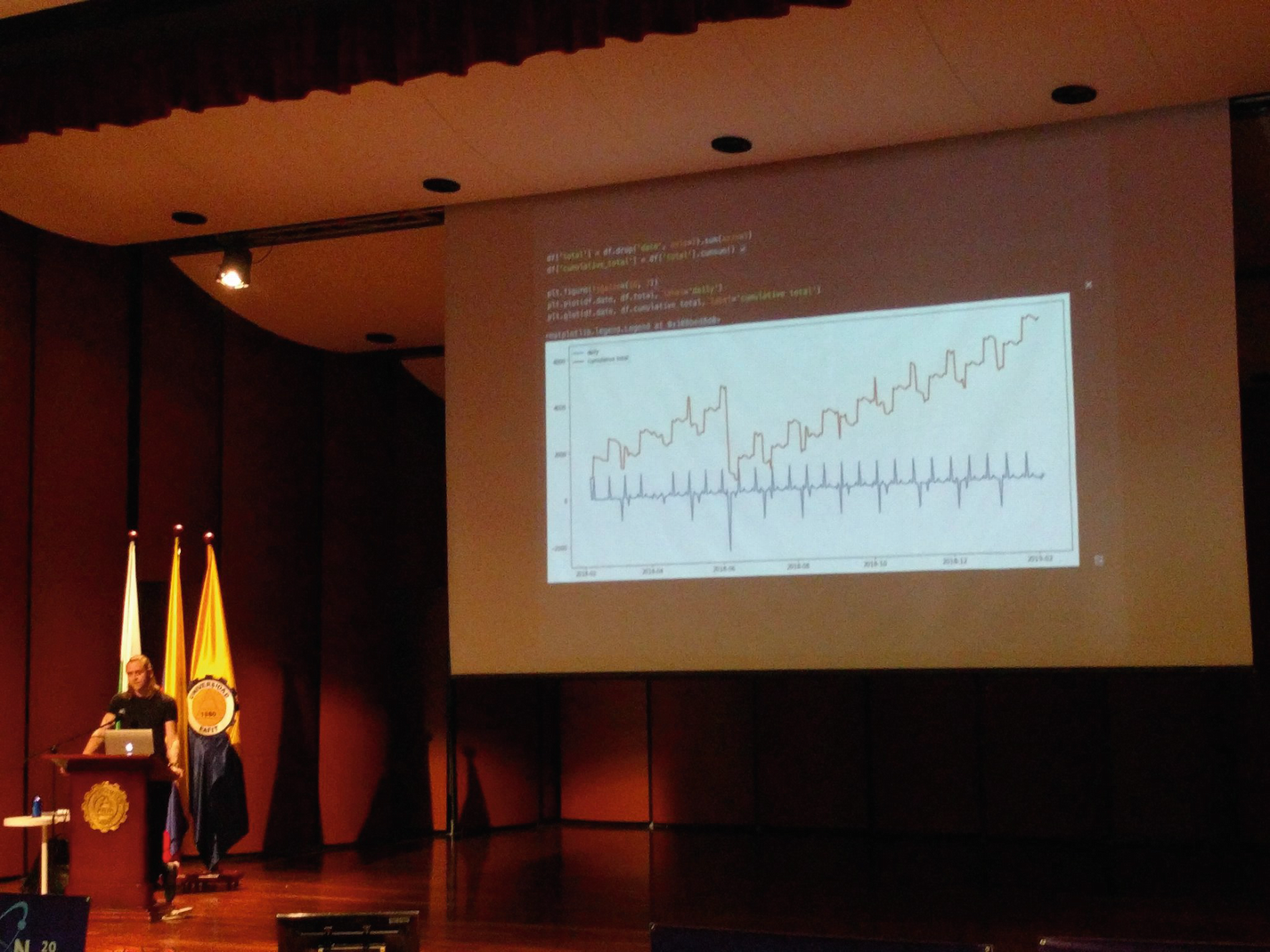
Me! Presenting Personal Pynance at Pycon, Colombia (Photo Credit: Moiss Vargas)
This book covers the following topics.
Youll explore the idea of spending money to make money with a timely motivating example. You will learn about DataFrames, the basics of loading data in pandas, how to get Python to play nicely with Excel, how to think about and calculate net present value and internal rate return, and how to apply functions to data.
Youll learn how to convert currency with Python. You will learn how to query a third-party API, how to coerce API responses into something usable, how to manage secrets, how to handle errors, and how to create Python classes.
Youll learn how to evaluate a buffet of loan options from different financial institutions. You will learn about how to calculate fixed-rate payments with numpy, how to build amortization schedules from scratch, how to build loops, and how to make those loops ultra-efficient and wicked quick.
Youll explore how to generate a budget that provides day-by-day cash flow resolution. You will learn how to deal with dates in Python, how to visualize data, how to use the recurrent library to parse English sentences, and how to work with the YAML file format.
Youll explore how to build a portfolio rebalancer. You will learn how to instantiate a portfolio, how to fetch stock quotes, how to update values in a DataFrame, and how to simulate order processing.
Youll explore how to forecast spending. You will learn how to use pandas and Prophet and how to use the past to generate values into the future. This chapter is a bit silly, but it provides a little window into the world of machine learning with Python and pandas.
This book is for anyone interested in Python, personal finance, or how to combine the two! It is geared toward those who want to better understand how to manage money more effectively and toward those who just want to learn or improve their Python.
Although this book assumes some (minimal) familiarity with programming and the Python language, if you dont have any, dont worry! Everything is built up piece by piece, and the first chapters are slow enough to start. A background in finance is not required.
To ensure that you can run all the code in the book, it is recommended that you install Python (3.6 or newer) with Anaconda. All the setup and configuration details can be found in Chapter .
To get the most out of this book, you should actually run the code examples on your own machine as you follow along. Running the code, seeing how it works, and playing with it will help you to internalize everything that is presented.
Code that you should execute will look like this:
Code that generates output (like a print statement, table, or chart) will look similar to this, with its output:
Font size:
Interval:
Bookmark:
Similar books «Personal Finance With Python: using pandas, requests, and recurrent.»
Look at similar books to Personal Finance With Python: using pandas, requests, and recurrent.. We have selected literature similar in name and meaning in the hope of providing readers with more options to find new, interesting, not yet read works.
Discussion, reviews of the book Personal Finance With Python: using pandas, requests, and recurrent. and just readers' own opinions. Leave your comments, write what you think about the work, its meaning or the main characters. Specify what exactly you liked and what you didn't like, and why you think so.

